.jpg)
 Mr. Swapnil Bhowmick
Mr. Swapnil Bhowmick
What is Breast Cancer ? | Breast cancer: Symptoms, causes, and treatment
What is Breast Cancer?
Cancer develops when changes in genes that control cell development, known as mutations, occur. The mutations allow cells to divide and proliferate in an uncontrollable manner. Breast cancer is a kind of cancer that originates in the cells of the breast. Typically, breast cancer develops in either the lobules or the ducts.Lobules are milk-producing glands, while ducts are the routes that transport milk from the glands to the nipple. Cancer can also develop in your breast's fatty tissue or fibrous connective tissue.Uncontrolled cancer cells frequently infiltrate other healthy breast tissue and can spread to lymph nodes beneath the arms. The lymph nodes are a major conduit for cancer cells to spread to other areas of the body.
What are the two types of Breast Cancer?
Breast cancer is classified into two types: invasive and noninvasive (or in situ).Noninvasive cancer has not migrated from the initial tissue, whereas invasive cancer has spread from the breast ducts or glands to other regions of the breast.
These two classifications are used to define the most prevalent forms of breast cancer, which include:
● Ductal carcinoma in situ (DCIS): is a noninvasive condition. The cancer cells in DCIS are limited to the ducts in your breast and have not spread to the surrounding breast tissue.
● Lobular carcinoma in situ (LCIS): is a kind of breast cancer that develops in the milk-producing glands. The cancer cells, like DCIS, have not infiltrated the surrounding tissue.
● Invasive ductal carcinoma(IDC): is a kind of ductal cancer that has spread throughout the body. The most prevalent kind of breast cancer is invasive ductal carcinoma (IDC). This form of breast cancer originates in the milk ducts of the breast and subsequently spreads to surrounding tissue. Breast cancer can spread to other adjacent organs and tissue if it has migrated to the tissue outside your milk ducts.
● Invasive lobular carcinoma (ILC): is a kind of lobular cancer that spreads throughout the body. Invasive lobular carcinoma (ILC) begins in the lobules of your breast and spreads to surrounding tissue.
Less common types of breast cancer:
● Paget’s disease of the nipple: is a less frequent form of breast cancer. This form of breast cancer originates in the ducts of the nipple but spreads to the skin and areola of the nipple as it develops.
● Tumor caused by Phyllodes: This extremely rare form of breast cancer develops in the breast's connective tissue. The vast majority of these tumors are benign, but a few are malignant.
Angiosarcoma. This type of cancer develops in the blood arteries or lymph vessels of the breast.
Inflammatory Breast Cancer
Inflammatory breast cancer (IBC) is an uncommon but deadly form of breast cancer. IBC accounts for just 1 to 5% of all breast cancer cases.Cells in this disease clog the lymph nodes near the breasts, preventing the lymph arteries in the breast from draining correctly. IBC, rather than causing a tumor, results in your breast enlarging, become red, and feel extremely heated.A malignant breast might look pitted and thick, similar to an orange peel. It is an extremely aggressive disease that may spread fast.
Metastatic Cancer
Stage 4 breast cancer is often known as metastatic breast cancer. Breast cancer has progressed from the breast to other areas of the body, such as the bones, lungs, or liver.Breast cancer has progressed to this stage. Your oncologist will devise a treatment plan with the objective of halting tumor development and spread.
Kidney Cancer: Symptoms, Diagnosis & Treatment
Breast Cancer Signs & Symptoms
Breast cancer may not generate any symptoms in its early stages. A tumor may be too tiny to be felt in many situations, yet an anomaly on mammography can still be noticed.If a tumor can be felt, the first symptom is generally the appearance of a new lump in the breast that was not previously there. Not all lumps, however, are cancerous.Each kind of breast cancer can produce a wide range of symptoms. Many of these symptoms are similar, but others may be distinct. The following are symptoms of the most prevalent breast cancers:
● a breast bulge or thickening that feels distinct from surrounding tissue and has lately acquired breast discomfort
● Swelling in all or part of your breast, with red, pitted skin
● Nipple discharge that is not breast milk
● Nipple discharge that is bloody peeling, scaling, or flaking of skin on your nipple or breast
● sudden and inexplicable change in the form or size of your breast inverted nipple changes in the look of your breast skin
● a bulge or bump beneath your arm
Triple-negative Breast Cancer
According to the American Cancer Society (ACS), triple-negative breast cancer is an uncommon illness that affects only approximately 10 to 15% of women with breast cancer. A tumor must exhibit all three of the following criteria to be classified as triple-negative breast cancer: It is devoid of estrogen receptors. These are cell receptors that bind to or connect to, the hormone estrogen. If a tumor possesses estrogen receptors, estrogen can accelerate tumor growth.Its surface does not include any extra HER2 proteins. HER2 is a protein that promotes the development of breast cancer.If a tumor satisfies all three of these characteristics, it is classified as triple-negative breast cancer. This kind of breast cancer grows and spreads faster than other types of breast cancer. Because hormone treatment for breast cancer is ineffective, triple-negative breast cancers are difficult to treat.
Breast Cancer Diagnosis
In addition to a breast exam, your doctor will
perform a comprehensive physical exam to establish if your symptoms are caused
by breast cancer or benign breast disease. They may also order one or more
diagnostic tests to assist them to figure out what's causing your symptoms.
The following tests can aid in the diagnosis of breast cancer:
● Mammogram: A mammography is the most frequent imaging test used to examine under the surface of your breast. Many women in their forties and fifties have yearly mammograms to screen for breast cancer. If your doctor believes you have a tumor or a worrisome area on your breast, she will order a mammogram.
● Ultrasound: A breast ultrasound creates an image of the tissues deep within your breast using sound waves. An ultrasound can assist your doctor in determining the difference between a solid mass, such as a tumor, and a benign cyst.
● Breast Biopsy: If your doctor suspects breast cancer, he or she may prescribe mammography as well as an ultrasound. If neither of these tests can determine if you have cancer, your doctor may do a breast biopsy.
1. During this test, your doctor will take a tissue sample from the suspected region and test it.
2. Breast biopsies are classified into various kinds.
3. In some of these tests, your doctor will take a tissue sample using a needle.
4. Others create an incision in your breast and then extract the sample.
Treatment for Breast Cancer
The stage of your breast cancer, the extent to which it has spread (if it has), and the size of the tumor all play a role in deciding the type of therapy you will require. To begin, your doctor will assess the size, stage, and grade of your cancer (how likely it is to grow and spread). Following that, you may talk about your therapy choices. The most frequent therapy for breast cancer is surgery. Chemotherapy, targeted therapy, radiation, and hormone therapy are all options for many patients.
Surgery
Breast cancer can be removed using a variety of surgical procedures, including:
● Lumpectomy: The tumor and some surrounding tissue are removed during this surgery, leaving the remainder of the breast intact.
● Mastectomy: A surgeon removes a whole breast during this surgery. Both breasts are removed during a double mastectomy.
● Biopsy of a sentinel node: This procedure involves the removal of a few lymph nodes that receive drainage from the tumor. The lymph nodes will be examined. You may not require further surgery to remove more lymph nodes if they do not have malignancy.
● Dissection of axillary lymph nodes: If cancer cells are found in lymph nodes removed during a sentinel node biopsy, your doctor may remove additional lymph nodes.
Radiation Therapy
Radiation therapy is the use of high-powered radiation beams to target and kill cancer cells. External beam radiation is used in the majority of radiation treatments. A big machine on the exterior of the body is used in this procedure. Therapeutic advances have also enabled doctors to irradiate cancer from within the body.
Brachytherapy is a form of radiation treatment. Surgeons use brachytherapy to treat cancer by implanting radioactive seeds, or pellets, near the tumor site. The seeds remain for a short time and act to kill cancer cells.
Chemotherapy
It is a pharmacological treatment that is used to kill cancer cells. Some patients may get chemotherapy on its own, but it is frequently used in conjunction with other therapies, including surgery.In certain situations, doctors choose to provide chemotherapy to patients prior to surgery. The therapy is intended to reduce the tumor so that the operation will be less intrusive.
The Bottom Line
Breast cancer occurs in one out of every ten women nowadays. Therefore, It’s essential to self-assess your breasts for any signs of enlargement or fixation within their mass.Check your breasts regularly while bathing and before going to bed (while lying down) for lumps and note whether they move without friction like they normally do. If you find any abnormal signs, consult your doctor immediately.
Diagnosing cancers of the breast in their early stages can help recover completely as well as rapidly.
कोलोरेक्टल कैंसर - कोलोरेक्टल कैंसर क्यों होता है, लक्षण, उपचार, दवा
FAQ's Breast Cancer
How do tamoxifen, raloxifene, anastrozole, and exemestane reduce the risk of breast cancer?
Breast cancer is the most common cancer among women other than skin cancer. In the US, breast cancer is the second-leading cause of cancer death in women after lung cancer, and it's the leading cause of cancer death among women ages 35 to 54.
How do I know if my family has a history of breast cancer?
If you or someone close to you had breast cancer before 50 years old, talk to your doctor about whether this could mean having inherited a faulty copy of one of two genes: BRAC1 or BRAC2. These genes may increase your chances of getting breast cancer.
What are the risk factors for breast cancer?
Breast cancer is the most common cancer among women other than skin cancer. In the US, breast cancer is the second-leading cause of cancer death in women after lung cancer, and it's the leading cause of cancer death among women ages 35 to 54. How do I know if my doctor should test me for breast cancer? If you're over 50 years old or have had dense breasts before menopause, talk to your health care provider about getting tested for breast cancer.
Your doctor may recommend:
1. Mammogram every year starting at age 20
2. Biopsy of suspicious areas
3. MRI scan
4. Ultrasound exam
5. Physical examination
6. Blood tests
7. Bone density testing
What are the warning signs of breast cancer?
Breast cancer is the most common cancer among women other than skin cancer. In the US, breast cancer is the second-leading cause of cancer death in women after lung cancer, and it's the leading cause of cancer death among women ages 35 to 54. How do I know if my family has a history of breast cancer?
If you or someone close to you had breast cancer before 50 years old, then chances are good that this person was born with one of two genes associated with increased risk: BRCA1 or BRCA2. These genes account for about 20 percent of hereditary breast cancer cases. Women whose mothers were also affected may carry these same genes.
What are the stages of breast cancer?
Breast cancer is the most common cancer among women other than skin cancer. In the US, breast cancer is the second-leading cause of cancer death in women after lung cancer, and it's the leading cause of cancer death among women ages 35 to 54. How does diet influence my chances of getting breast cancer?
The link between nutrition and breast cancer has been studied extensively over the past few decades. A number of studies suggest that certain foods may increase or decrease one's risk of developing this deadly form of cancer. Some researchers believe that eating too much red meat could raise the risk of breast cancer while others say that consuming lots of fruits and vegetables might help prevent the disease.
What are the symptoms of stage 1 breast cancer ?
The most common type of breast cancer is called invasive ductal carcinoma. This form accounts for about 80% to 85% of all cases and tends to spread through lymphatic channels into nearby tissues such as the chest wall muscles, ribs, lungs, heart, liver, spleen, bone marrow, brain, spinal cord, skin, and other organs. The remaining 15% to 20% are classified as non-invasive cancers that do not invade surrounding structures.
Stage 2 Breast Cancer Symptoms ?
The testing your doctor does will determine the stage of your breast cancer, which will affect your treatment.
Treatment Options for Breast Cancer ?
There are many different types of treatments that can be used to treat breast cancer. Your doctor may recommend one or more of these options: surgery, chemotherapy, radiation therapy and hormone therapy. The type of treatment you receive depends on a number of factors including how far the tumor has spread, whether it is inoperable, what kind of tissue it’s made up of, and other health issues.
How to know if you have Stage 3 or 4 Breast Cancer?
Stage 3 and stage 4 breast cancer are the most advanced stages of this disease. They can be very aggressive, but they also respond well to treatment. The earlier a patient is diagnosed with these types of cancers, the better their chances for survival. If your doctor suspects that you may have either type of cancer, he will perform tests on your breasts and lymph nodes in order to determine whether it has spread beyond its original site.
The most common symptom is a lump in your breast. Other signs and symptoms include ?
• A change in the size or shape of one or both breasts
• Pain, redness, swelling, dimpling of skin on chest wall
• Swelling around armpit or underarm
• Change in nipple discharge
• Breast pain that does not go away after you have been lying down for awhile
• Weight loss
• Fever
• Coughing up blood-tinged mucus
• Shortness of breath
• Chest tightness
References:

Mr. Swapnil Bhowmick
A motivated student of Medicine & Surgery (MBBS) at R. G. Kar Medical College & Hospital, Kolkata, having a knack for reading and composing medical literature. When he's not writing content for MEDtalks, Swapnil is usually looking up the latest trends and innovations in Medicine.

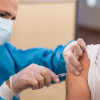
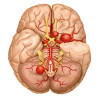

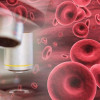
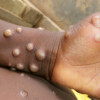
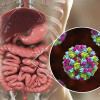


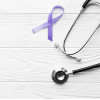
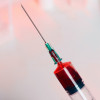
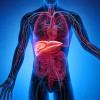
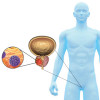
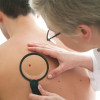
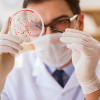
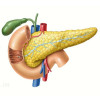
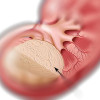
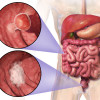


Please login to comment on this article